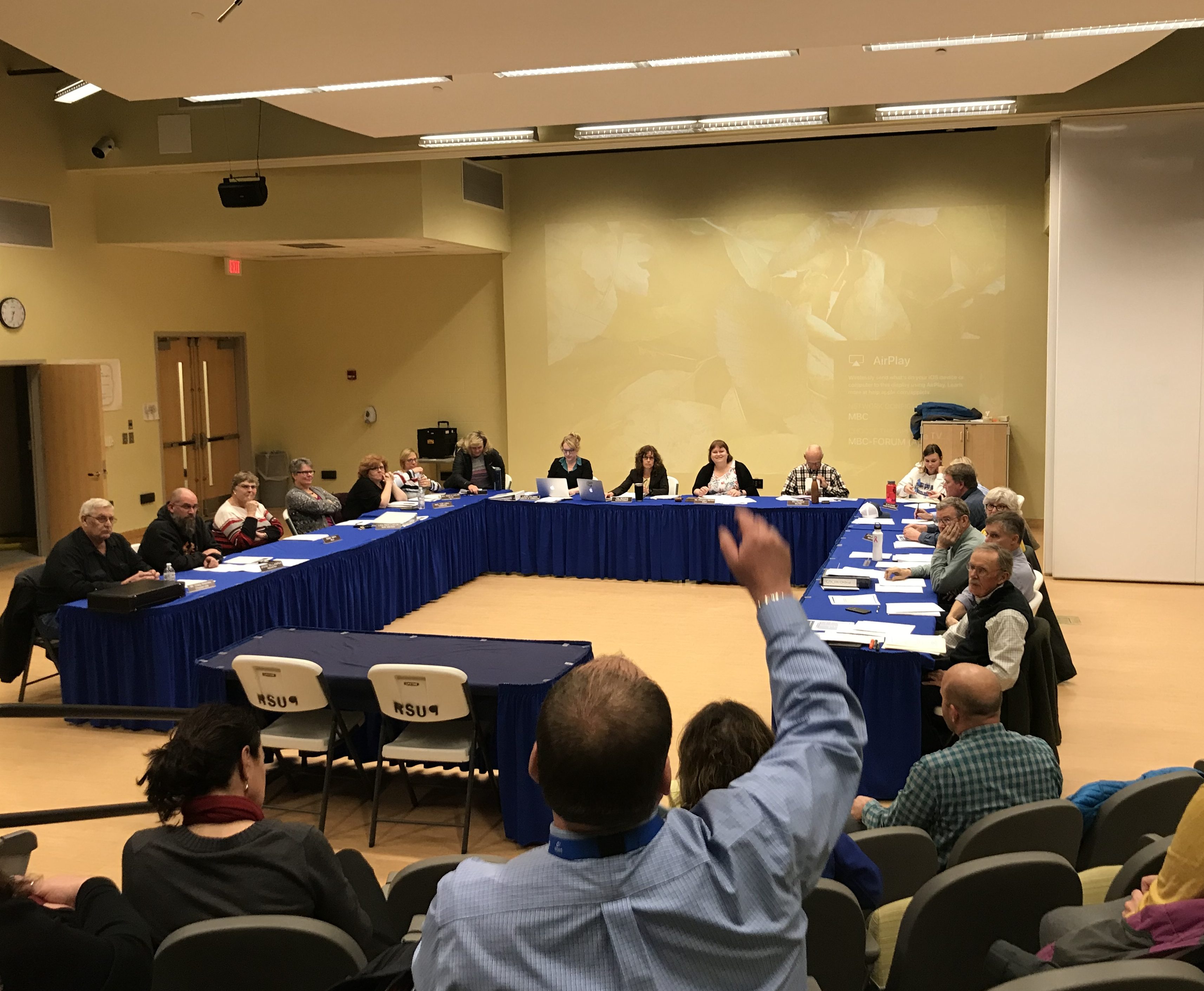
FARMINGTON – School board directors reviewed the latest assessment data from the state at Tuesday’s meeting, with Regional School Unit 9 showing improvement in several areas.
The data was collected by the Maine Department of Education from the 2018-19 school year, including test results from the eMPowerME, the Maine Educational Assessments and the SAT. According to Laura Columbia, the district’s curriculum coordinator, there were 2,241 students enrolled in district schools during that school year.
The test scores were positive, showing growth in each overall area and closing the gap between RSU 9 and the state average. EMPowerME literacy data – representing grades 3 to 8 – showed 13 percent growth of the number of students meeting or exceeding state expectations as compared to the 2017-18 school year, to 51 percent. That outpaced the state average difference, of plus 7 percent.
The EMPowerME math data also showed growth, going from 27 percent in 2017-18 to 30 percent in 20189-19. The state average decreased by 1 percent during that same time period.
SAT scores, gauging the perormanc showed similar trends. RSU 9 saw increases of 3 and 2 percent for literacy and math, respectively, with the state average literacy scores decreasing by 2 percent and the state math scores holding steady.
Science scores, tracked by the state MEA test, increased slightly at both RSU 9 and across the state. RSU 9’s showed 58 percent of tested students meeting or exceeding state standards.
The gains made within the district have allowed it to close the gap between the district’s test scores and the state average, Columbia said. However, the district still trailed the state averages by roughly 5 percent in most areas. Asked by directors about the improvement over the past couple of years, Columbia attributed some of it to a more unified approach to professional development and clear learning goals across the entire district. Teachers also now have access to multiple years of data – the state switched from the New England Common Assessment Program to the EMPowerME four years ago – and instructors spend time during late-arrival Wednesdays working on test-related material, among other things. Urgency was also a key factor in the improvement, Columbia said: the district’s scores were low and staff wanted to see improvement.
“We’ve made great strides,” Columbia said, “but we still have a ways to go.” Reaching the state average across the board was a good goal, she said.
As is the case across the state, economically-disadvantaged students – tracked through the free/reduced lunch program – continue to lag far behind their peers. That “great difference” is a constant concern for administrators, Superintendent Tina Meserve said. In RSU 9, 45.6 percent of students are receiving free or reduced lunch; the state does provide additional funds for those students. Initiatives that the district has in place to help students include math and literacy support, the Pathway for All Learners program and bringing social workers into the school. Even something as straightforward as an additional teacher, reducing class sizes in a building, could have a major impact, Meserve said.
Challenges that administrators and directors identified include chronic absenteeism – something that schools are attempting to address through programs such as the Mt. Blue Middle School’s “Strive for Five.” Those initiatives can positively impact some students, Columbia said, but the district was still dealing with students missing dozens of days a year. Children are also coming into pre-K and kindergarten with fewer established skills then in years past; tests administered upon their arrival in RSU 9 show clear downward trends, according to administrators. This has led to changes in classroom programming, as kindergarten classrooms now teach skills that they wouldn’t have years ago.
Some next steps for the district include working with local pediatricians to distribute free and reduce lunch forms, continuing to focus on unifying district goals and reading and writing and using Star 360, an assessment that can provide data more rapidly for grades 2 through 10. This allows staff to intervene more quickly if a student is struggling; the state tests only report back periodically.
In other business, the board approved the hiring of Good Group Decisions of Brunswick to facilitate the development of the district’s strategic plan. That group was one of two in consideration; directors felt that Good Group Decisions had presented a more flexible, “hands-on” proposal for the district. The exact cost of the service will depend on the number of meetings and other factors the board will determine. This year’s budget process set aside $20,000 for the purpose.





Great job RSU 9 students and staff! Keep up the hard work!
It is great to see improvement. However I will go back to the amount of students listed on the highest, high and honor roll. With that many students succeeding at that level, and our test scores are still below the state average, does this mean our curriculum is to soft? To me something just does not add up.
Jordan, no – I think the numbers just look high because Mt. Blue High School is being compared to much smaller schools. In terms of the number of total students, it’s normal. We have a lot of great students, and our schools are doing better to help those who have struggled.